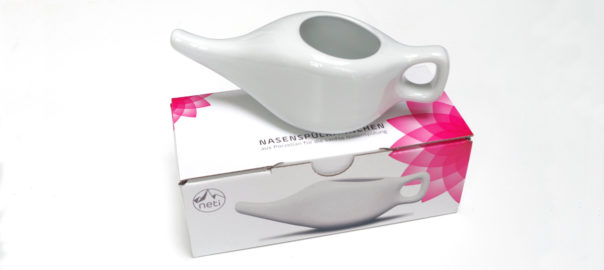The yoga path is a path of personal development, striving to experience what is called “the divine essence”.
This is a state in which all the superfluous, all illusions, all ballast, whether mental, emotional, physical or energetic, has been released.
So it presupposes a cleansing on all levels. This “cleansing”, and especially the maintenance of a state of purity, is a prerequisite for good meditation, in order to be able to perceive the most subtle movements of consciousness and energy in the body.
In fact, there is a lot of truth in that. An emotional layer that is torn by violent emotions, a mind that is misty or overly excited by inappropriate, or excessively stimulating nutrition, or a body that suffers from a high degree of obesity or too many toxins is not conducive to lucid concentration or serene meditation.
Purity
Old yoga texts therefore contain relatively many instructions on purity and hygiene. Purity of the body, purity of food, purity of one’s relationship to oneself, to others and to the world.
The sanskrit term for purity is saucha.
The purity of the body was taken very literally. The daily purification of all body orifices is part of this. The aim was to remove all kinds of unruly dirt that jhad gotten incrusted in the body.
Rinsing the large intestine (colon cleansing), or swallowing a long stretch of fabrie which is then slowly pulled out again. Or drinking a large quantity of lukewarm salted water and then vomiting up the entire contents of the stomach. It was all part of the process and sometimes looked more like self-flagellation.
Nasal rinse
However, some of these practices are easily achievable and of great benefit to modern people. One of them is the daily rinsing of the nose with lukewarm salted water.
I learned it in the days when I was still practising Kundalini yoga. In the meantime I have abandoned that particular type of yoga. But I am still into the neti-nose rinse almost on a daily basis.
Together with ditching milk products, the neti-nose rinse is also one of the key reasons why I have almost never suffered from nasal colds for more than 7 years now.

What do you need
Very little, in fact!
- A little jug for nasal rinsing
- A solution of sea salt or himalaya salt in water
- A kettle or water heater
- 5 minutes of discipline every morning
The saline solution
Sea salt and himalaya salt are closest to the salt found in nature. After all, in addition to the ordinary sodium chloride, they contain countless other salts and minerals.
How concentrated should it be?
When I first heard about neti-nose rinsing, there was no clarity or clear information at all about it in the Kundalini world. People just went along, and it sometimes seemed like a form of competition to show who was the toughest: the more salt, the better. The more it gave a burning sensation in the nose, the better.
But today we are going to use our common sense and above all, treat our body with love and respect. That is why it is good to have a look at the natural internal salt concentration of the body, and take that as a starting point for an efficient and pleasant mixture. In a ratio that purifies the nose well and only causes a slight, rather pleasant activation of the mucous membranes.
The natural salt concentration of our body is approximately 8.5 to 9 grams of salt per litre.
A bottle with stock solution
Preparing the salted water and storing it in a bottle is a very practical way of working. It provides you with good rinsing water at an appropriate temperature every day:
- Take a 1 litre glass bottle, with a resealable ceramic stopper
- Weigh about 20 to 25 grams of salt
- Bring the salt into the bottle, and then fill the bottle almost completely with warm tap water
- Shake the mixture until the salt is completely dissolved
- Fill further with cold water until the bottle is full.
You now have a bottle with a saline solution of 20 to 25 grams per litre. That is twice as concentrated as what you need.
The daily rinse
Now proceed as follows in the morning:
- Take a glass with about the same content as your neti jug
- Fill half the glass with the salt solution from the storage bottle
- Fill the other half with hot, boiled water
- Pour the mixture into your neti jug
- Go stand with your head tilted to one side above a washbasin or sink
- Insert the spout of the jug into your upper nostril and pour the liquid into it
- Let the water drain through your internal nasal cavity and through the lower nostril into the sink
- You can, if so desired, breathe in the saline rinsing liquid a bit. Hold your head tilted slightly backwards in order to “gargle”
- Repeat the cleansing procedure with your head the other way around until the jug is empty
- Finally, snout forcefully to empty each nostril in order to remove any remaining impurities.
For maintenance, just rinse the jug with water after use.
Free breathing
By cleaning your nose in this way at the beginning of every day, you ensure a clean nasal cavity in which dirt does not get a chance to linger. After all, it is precisely in these waste products that bacteria and viruses can nestle in advance, after which they easily find their way up into the nasal cavity. They can be at the origin of colds or flu.
Moreover, after rinsing, you will experience the pleasant feeling of free and unhindered breathing, which also benefits your morning yoga practice.
The white porcelain neti jugs of German manufacture are available in the yoga studio.
They cost 22,00 euros a piece.
If you want to make a reservation for one, please send me an e-mail.

